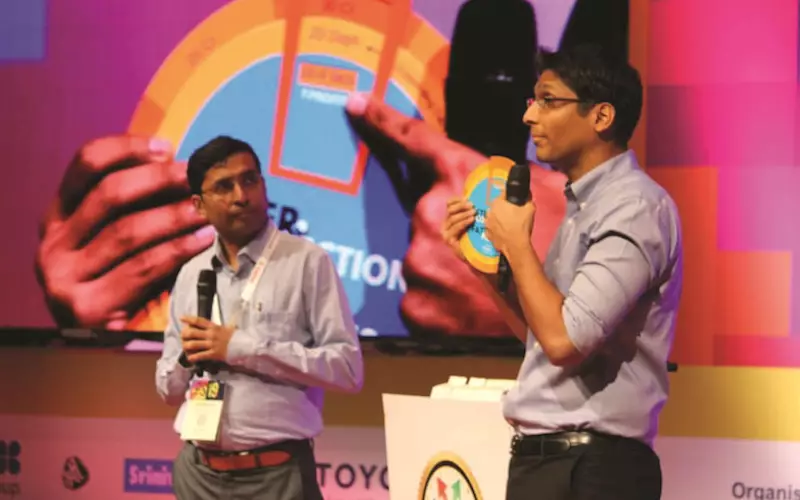Print Summit 2019: How to quicken payment collection cycles
TimePay's founder and co-founder, Animesh Kejriwal and Pavan Bindal, put a spotlight on print industry's pet peeve outstanding receivables. The duo spoke about how to make payment collection effective and effortless.
24 Jan 2019 | By Rushikesh Aravkar
Pawan Bindal and Animesh Kejriwal founded TimePay in order to help business get paid on time. Pawan was a senior director at Dun and Bradstreet and has spent 18 years in banking and finance. Animesh is a director at Parksons Graphics, and has a background in software engineering. TimePay is a receivable management tool that helps businesses manage their dues, send automated reminders and improve their collections.
Bindal said, the industry is losing Rs 2,000-crore every year in form of outstanding receivables to the print buyers. He arrived at this value considering the print industry's annual turnover of Rs 77,000-crore and the average credit period that a printer offers to its customer is 90 days and an interest rate of 10%.
“Now even if we are able to improve the collection cycles by 10%, it would translate into large savings," added Bindal.
Kejriwal and Bindal highlighted few common reasons why payments don't happen on time.
Client says:
- We forgot to make the payment because it's not on his priority list
- We haven't received the invoices on time and now we have closed the books for the year
- The 30 days credit period starts from the receipt of all the documentation
- The person who was responsible for the task has left the organisation
The answer to this vexed issue, according to Bindal and Kejriwal, is the plan-do-check approach to look at outstanding receivables.
Bindal explained, “The first step is to plan. This includes customer KYC details like despatch to address, follow-up personnel, billing address, credit terms, etc. And prioritise your clients on the basis of their payment history. Focus on slow-paying clients."
The next step, according to Bindal, is to schedule follow-ups and monitor the clients. “One must be aware of the financial health of the client and accordingly adjust the credit terms."
The final step is check. Bindal focused on a DSO metric. DSO stands for daily sales outstanding. It is a fraction of accounts receivales up on average sales per day. Every company must strive to bring down the DSO.
“With this approach, you will be able to improve follow-ups and collections, and thereby improve cash flows, and reduce bad debts and payment delays," concluded Bindal.











 See All
See All